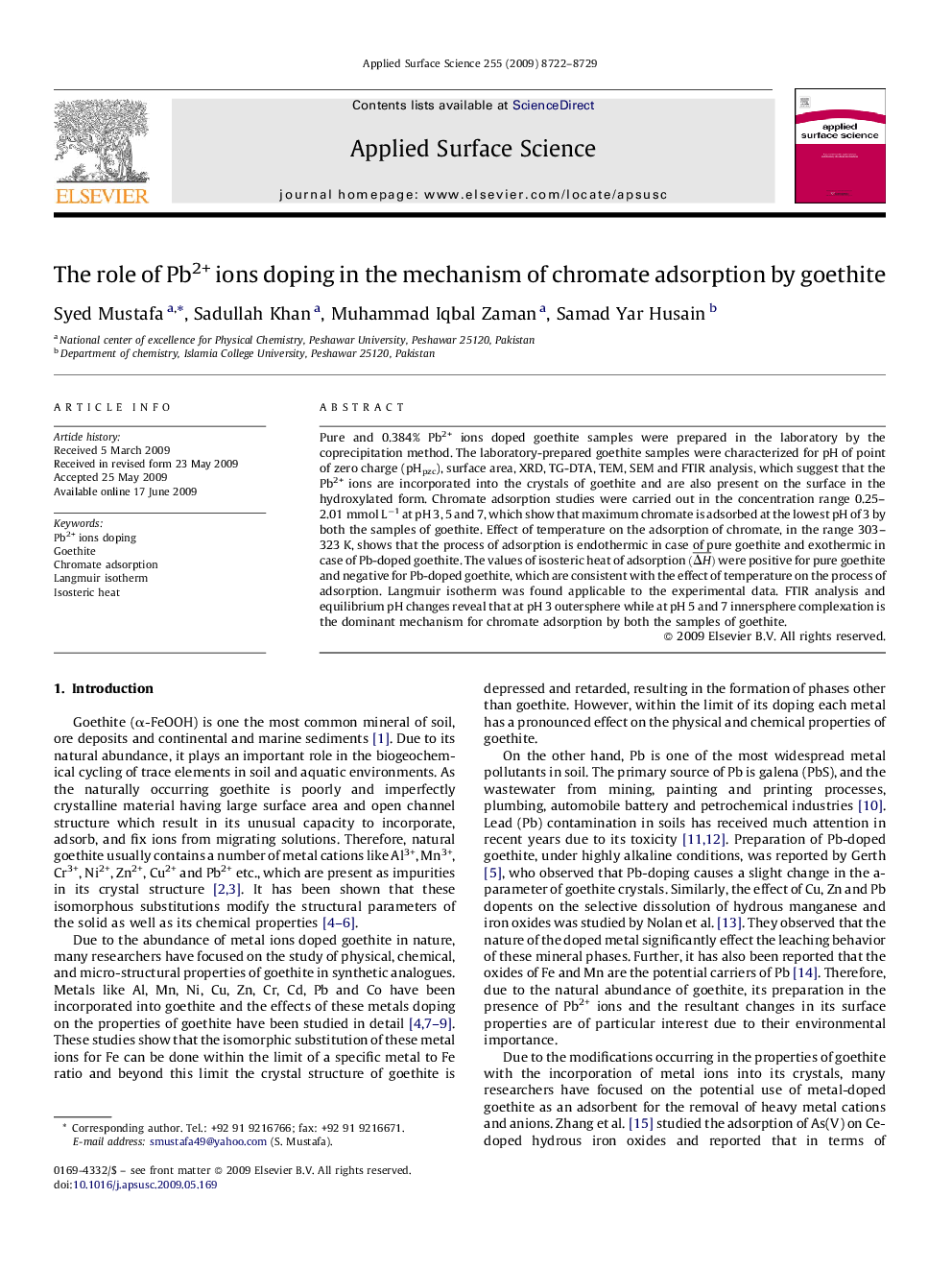| Article ID | Journal | Published Year | Pages | File Type |
|---|---|---|---|---|
| 5359431 | Applied Surface Science | 2009 | 8 Pages |
Abstract
Pure and 0.384% Pb2+ ions doped goethite samples were prepared in the laboratory by the coprecipitation method. The laboratory-prepared goethite samples were characterized for pH of point of zero charge (pHpzc), surface area, XRD, TG-DTA, TEM, SEM and FTIR analysis, which suggest that the Pb2+ ions are incorporated into the crystals of goethite and are also present on the surface in the hydroxylated form. Chromate adsorption studies were carried out in the concentration range 0.25-2.01 mmol Lâ1 at pH 3, 5 and 7, which show that maximum chromate is adsorbed at the lowest pH of 3 by both the samples of goethite. Effect of temperature on the adsorption of chromate, in the range 303-323 K, shows that the process of adsorption is endothermic in case of pure goethite and exothermic in case of Pb-doped goethite. The values of isosteric heat of adsorption (ÎH¯) were positive for pure goethite and negative for Pb-doped goethite, which are consistent with the effect of temperature on the process of adsorption. Langmuir isotherm was found applicable to the experimental data. FTIR analysis and equilibrium pH changes reveal that at pH 3 outersphere while at pH 5 and 7 innersphere complexation is the dominant mechanism for chromate adsorption by both the samples of goethite.
Related Topics
Physical Sciences and Engineering
Chemistry
Physical and Theoretical Chemistry
Authors
Syed Mustafa, Sadullah Khan, Muhammad Iqbal Zaman, Samad Yar Husain,
